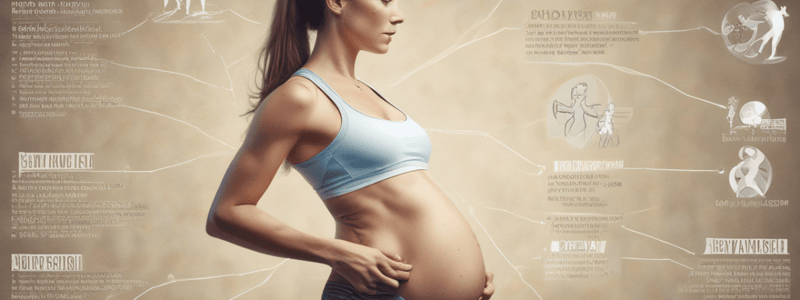Podcast
Questions and Answers
Match the following concepts with their descriptions:
Match the following concepts with their descriptions:
Deamination process = Breakdown of amino acids to remove the amino group Ammonia conversion = Process where toxic ammonia is converted to urea in the liver Urea production = Formation of urea in the liver as a way to excrete ammonia Protein as a fuel source = Proteins can be used for energy production when other fuel sources are insufficient
Match the following terms with their associated features:
Match the following terms with their associated features:
Deamination process = Occurs in the liver to prepare amino groups for urea synthesis Ammonia conversion = Helps prevent ammonia toxicity in the bloodstream Urea production = Enables the excretion of nitrogen waste in urine Protein as a fuel source = Can be utilized during prolonged fasting periods for energy needs
Match the following processes with their outcomes:
Match the following processes with their outcomes:
Deamination process = Conversion of amino acids to keto acids and free ammonia Ammonia conversion = Synthesis of urea from excess ammonia in the liver Urea production = Transport of urea to the kidneys for elimination in urine Protein as a fuel source = Utilization of amino acids for energy production in the absence of carbohydrates
Match the following functions with their roles in protein metabolism:
Match the following functions with their roles in protein metabolism:
Match the following terms with their implications in protein deficiency:
Match the following terms with their implications in protein deficiency:
Match the following processes with their significance in protein metabolism:
Match the following processes with their significance in protein metabolism:
Match the following with their corresponding process:
- Deamination
- Ammonia Conversion
- Urea Production
- Protein as a Fuel Source
Match the following with their corresponding process:
- Deamination
- Ammonia Conversion
- Urea Production
- Protein as a Fuel Source
Match the following with their corresponding concept:
- Deamination
- Urea Production
- Protein Deficiency
- Ammonia Toxicity
Match the following with their corresponding concept:
- Deamination
- Urea Production
- Protein Deficiency
- Ammonia Toxicity
Match the following with their corresponding metabolic pathway:
- Glycolysis
- Urea Cycle
- Protein Synthesis
- Gluconeogenesis
Match the following with their corresponding metabolic pathway:
- Glycolysis
- Urea Cycle
- Protein Synthesis
- Gluconeogenesis
Match the following with their corresponding condition:
- Kwashiorkor
- High Protein Diet
- Ammonia Build-up
- Protein Overconsumption
Match the following with their corresponding condition:
- Kwashiorkor
- High Protein Diet
- Ammonia Build-up
- Protein Overconsumption
Match the following with their corresponding effect:
- Ammonia Toxicity
- Protein Deficiency
- Excess Protein
- Nitrogen Balance
Match the following with their corresponding effect:
- Ammonia Toxicity
- Protein Deficiency
- Excess Protein
- Nitrogen Balance
Match the following with their corresponding outcome:
- Protein Utilization
- Urea Formation
- Ammonia Detoxification
- Nitrogen Balance
Match the following with their corresponding outcome:
- Protein Utilization
- Urea Formation
- Ammonia Detoxification
- Nitrogen Balance
Match the following with their correct description:
Match the following with their correct description:
Match the following with their appropriate role in the body:
Match the following with their appropriate role in the body:
Connect each with the correct factor typically considered in protein quality:
Connect each with the correct factor typically considered in protein quality:
Match the following with their appropriate impact on health:
Match the following with their appropriate impact on health:
Match the following with their connection to vegetarian diets:
Match the following with their connection to vegetarian diets:
Match the following with their implications on body weight and muscle growth:
Match the following with their implications on body weight and muscle growth:
Flashcards are hidden until you start studying




